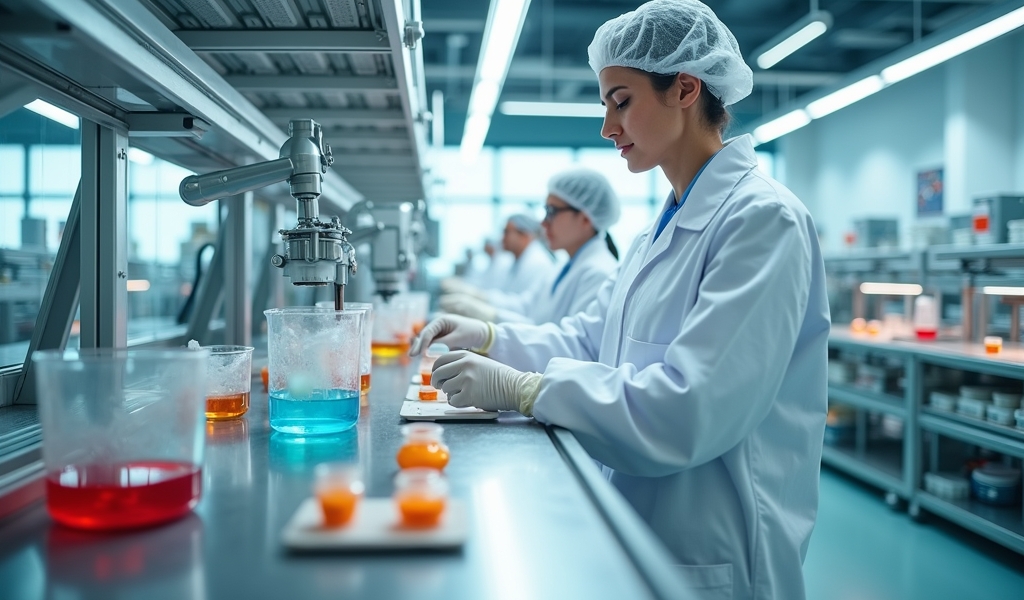Table of Contents
- Summary of the Article
- Safety in Manufacturing: A Healthcare Perspective
- Sustainability’s Impact on Healthcare
- The AI and Automation Revolution in Healthcare
- The Telehealth Connection
- Patient Safety: Our Shared Priority
- Future Integration and Adaptability
- Conclusion
Summary of the Article
The recent article “Companies Reveal Their Next Moves in Manufacturing” published in Pharmaceutical Technology’s Trends in Manufacturing eBook (May 2025) highlights key developments shared by pharmaceutical manufacturing companies at INTERPHEX 2025. While concerns about tariff policies were present, the industry representatives primarily focused on three emerging themes: safety improvements through spill prevention and single-use technologies, sustainability initiatives, and increasing integration of artificial intelligence and automation in manufacturing processes. The article details how companies are developing modular “Lego-like” approaches to manufacturing components, allowing for greater customization and efficiency. You can read the full article here.
Safety in Manufacturing: A Healthcare Perspective
At Dr Telx, we view the safety innovations highlighted in this article as critical advances that directly impact patient care. The pharmaceutical manufacturing process forms the foundation of medication safety that we rely on every day when providing care to our patients.
The “breaking up the octopus” approach mentioned by Todd Andrews resonates strongly with our telewellness philosophy. Modular, adaptable systems that can be customized for specific needs mirror our own approach to personalized healthcare delivery.
When we prescribe medications to patients across our network, we’re placing our trust in the integrity of manufacturing processes. Innovations that prevent contamination and ensure consistent quality translate directly to better patient outcomes in our practice.
Sustainability’s Impact on Healthcare
The sustainability focus mentioned in the article aligns perfectly with Dr Telx’s commitment to responsible healthcare practices. Telehealth is inherently a more sustainable model, reducing transportation emissions and resource usage compared to traditional care models.
We’re particularly interested in the evolution of single-use technologies mentioned in the article. While single-use systems reduce contamination risks, they also raise environmental concerns that must be balanced carefully—a challenge we recognize in our own operations when considering medical supplies and packaging.
As healthcare providers, we have a responsibility to consider the environmental impact of our recommendations and prescriptions. The pharmaceutical industry’s sustainability efforts complement our own commitment to planet-friendly healthcare delivery.
The AI and Automation Revolution in Healthcare
The article’s mention of AI and automation as key manufacturing trends mirrors what we’re experiencing on the healthcare delivery side. At Dr Telx, we’re witnessing firsthand how intelligent systems can enhance clinical decision-making while maintaining the essential human connection in care.
Automation in pharmaceutical manufacturing potentially means more consistent medication quality and safety for our patients. It also suggests future possibilities for more personalized medication formulations that could be tailored to individual patient needs—something that would revolutionize our approach to treatment plans.
The data-driven approach in modern manufacturing parallels our use of patient data to inform care decisions. Both industries are finding the right balance between technological efficiency and human oversight.
The Telehealth Connection
The manufacturing adaptations described in the article—particularly the move toward more flexible, modular systems—mirror the evolution of telehealth services at Dr Telx. We’ve designed our care model to be adaptable to different patient needs while maintaining consistent quality standards.
Just as manufacturers are finding ways to customize at the point of use, we personalize care at the point of delivery. Our telehealth platform allows for standardized protocols that can be customized for individual patient circumstances—efficiency without sacrificing personalization.
The supply chain challenges mentioned in the article remind us of our own responsibility to ensure reliable access to care. Just as manufacturers must deliver consistent product quality despite external pressures, we must maintain care standards regardless of technological or regulatory changes.
Patient Safety: Our Shared Priority
The focus on spill prevention and contamination control highlighted by Joe Bobacher reflects our own prioritization of patient safety above all else. While our domain is digital, we share the same fundamental commitment to “do no harm.”
At Dr Telx, we implement multiple layers of protection in our telewellness approach, from secure communications to rigorous medication reconciliation processes. These parallels manufacturing’s multiple safety systems designed to catch potential issues before they affect product quality.
The evolution toward standardized yet customizable components in manufacturing reminds us of the importance of protocol-driven care that still allows for clinical judgment. Both approaches aim to reduce errors while maintaining flexibility.
Future Integration and Adaptability
The manufacturing sector’s response to political and economic pressures, as noted by David Loula regarding tariffs, highlights the importance of adaptability in all healthcare-adjacent industries. At Dr Telx, we similarly must navigate changing regulatory landscapes while maintaining our commitment to accessible care.
We envision a future where telehealth platforms like ours integrate more directly with pharmaceutical supply chains, potentially allowing for more responsive medication management based on real-time patient needs and feedback. The manufacturing innovations described could make this integration more seamless.
The industry’s willingness to evolve manufacturing approaches gives us confidence that future medications will be safer, more effective, and potentially more personalized—all developments that would enhance our ability to provide exceptional care.
Conclusion
The manufacturing innovations highlighted in this article represent important advances that will ultimately benefit patient care. At Dr Telx, we see clear parallels between the evolution of pharmaceutical manufacturing and our own telewellness approach—both industries are leveraging technology to become more adaptable, efficient, and patient-centered.
As we continue to develop our telehealth services, we remain mindful of these manufacturing advances and how they might integrate with our care delivery. The shared focus on safety, sustainability, and intelligent automation across industries gives us confidence that healthcare is moving in a direction that will benefit patients through every stage of the care journey.
Our commitment at Dr Telx remains unchanged: to provide modern, accessible care that adapts to changing technologies while maintaining the personal connection at the heart of effective healthcare. The pharmaceutical manufacturing innovations described in this article will be valuable partners in that mission.

